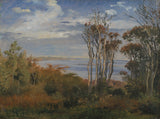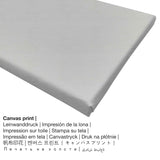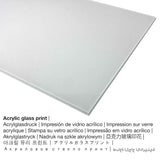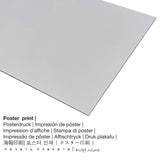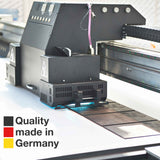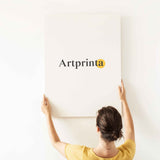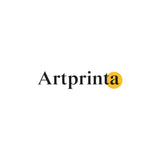Johan Thomas Lundbye, 1846 - Kolås Wood. Vejrhøj - ọmarịcha nka nka
Ụtụ gụnyere. Mbupu gbakọrọ na ndenye ọpụpụ.
Ozi ngwaahịa nka zuru ezu
Kolås Wood. Vejrhøj is a piece of art created by the romanticist Danish artist Johan Thomas Lundbye. The work of art is part of the Statens Museum maka Kunst (National Gallery nke Denmark)'s nchịkọta dijitalụ. Site n'ikike nke: National Gallery nke Denmark (ikike - ngalaba ọha).Ebe E Si Nweta nke ihe osise:. Ọzọkwa, itinye n'usoro mmepụta dijitalụ dị odida obodo format n'akụkụ akụkụ nke 4: 3, nke pụtara na ogologo bụ 33% ogologo karịa obosara. Johan Thomas Lundbye was a painter, whose style can be classified as Romanticism. The Romanticist painter lived for a total of 30 afọ - born in 1818 in Kalundborg, Sj?lland, Denmark and died in the year 1848.
Nweta ihe ebipụta nka ị chọrọ
The product dropdown list ofers you the chance to select your favorite material and size. The following options are available for individualization:
- Ugogbe acrylic ebipụtara: The acrylic glass print, which is often denoted as a plexiglass print, changes your favorite original artwork into great home decoration and forms a viable alternative option to canvas or dibond prints. The artwork is being printed with state-of-the-art UV direct printing machines. The great upside of an acrylic glass fine art copy is that sharp contrasts plus color details become visible thanks to the granular gradation in the print. Our plexiglass with real glass coating protects your chosen fine art print against sunlight and external influences for up to 60 years.
- Mbipụta akwụkwọ mmado (ihe kwaaji): The poster print is a printed canvas with a slightly rough structure on the surface. It is suited for framing the art replica in a personal frame. Please bear in mind, that depending on the absolute size of the poster print we add a white margin 2-6cm around the print, which facilitates the framing.
- Aluminom dibond (ọkpụkpụ ọla): This is a metal print made on aluminium dibond with an outstanding effect of depth. A direct Direct Print on Aluminum Dibond is the excellent introduction to fine art replicas with aluminum. For the Print On Aluminum Dibond, we print the favorite artpiece right on the aluminium composite white-primed surface. The colors of the print are luminous and vivid, fine details appear crisp, and you can really perceive the matte appearance of the product. This direct UV print on Aluminum Dibond is one of the most demanded entry-level products and is a modern way to display fine art reproductions, because it puts all of the viewer’s attention on the artwork.
- Mbipụta kwaaji: The canvas print, which should not be mistaken with a canvas painting, is a digital replica applied directly on canvas fabric. It produces the exclusive effect of three dimensionality. Canvas Prints have the great advantage of being relatively low in weight. This means, it is quite simple to hang the Canvas print without any wall-mounts. That is why, a canvas print is suited for all types of walls.
Ederede iwu: We try our utmost to describe our art products with as many details as possible and to exhibit them visually in our shop. Please keep in mind that some pigments of the print materials, as well as the print result can vary slightly from the representation on the device's monitor. Depending on your screen settings and the nature of the surface, not all color pigments can be printed as exactly as the digital version depicted here. Because the art reproductions are printed and processed by hand, there might also be slight deviations in the size and exact position of the motif.
Ngwaahịa a
| Nkewa edemede: | ọrụ mgbidi |
| Usoro mmeputakwa: | dijitalụ mmeputakwa |
| Usoro nhazi: | Mbipụta UV ozugbo (mbipụta dijitalụ) |
| Ihe ngosi: | German mere |
| Ụdị ngwaahịa: | na mmepụta ihe |
| Ihe eji eme atụmatụ: | gallery mmeputakwa nka, mkpokọta nka (mmeputakwa) |
| Nhazi nke ihe nka: | usoro odida obodo |
| Oke akụkụ: | ogologo ruo obosara 4: 3 |
| Mmetụta ihe onyonyo: | ogologo bụ 33% ogologo karịa obosara |
| Nhọrọ akụrụngwa: | akwụkwọ mmado (akwụkwọ kwaaji), mbipụta enyo acrylic (nwere ezigbo mkpuchi iko), mbipụta akwa akwa, mbipụta ọla (aluminium dibbond) |
| Kanvas n'elu etiti ihe ndọtị (mbipụta akwa akwa): | 40x30cm - 16x12", 80x60cm - 31x24", 120x90cm - 47x35", 160x120cm - 63x47" |
| Mbipụta iko acrylic (nwere ezigbo mkpuchi iko) nhọrọ nha: | 40x30cm - 16x12", 80x60cm - 31x24", 120x90cm - 47x35", 160x120cm - 63x47" |
| Nhọrọ nha nke akwụkwọ mmado (akwụkwọ kwaaji): | 40x30cm - 16x12", 80x60cm - 31x24", 120x90cm - 47x35" |
| Nhọrọ nha nha nke Dibond (ihe alumnium): | 40x30cm - 16x12", 80x60cm - 31x24", 120x90cm - 47x35" |
| Igwe onyonyo: | adịghị |
Data ndabere na akụkụ nka pụrụ iche
| Aha nke ihe nka: | "Kolås Wood. Vejrhøj" |
| Nhazi nka: | sere |
| Okwu mkpokọta: | nkà nke oge a |
| Century: | 19th narị afọ |
| Emepụtara na: | 1846 |
| Afọ nka: | karịa afọ 170 |
| Ụlọ ihe ngosi nka / ebe: | Statens Museum maka Kunst (National Gallery nke Denmark) |
| Ebe ebe ngosi nka: | Copenhagen, Denmark |
| Weebụsaịtị ihe ngosi nka: | Statens Museum maka Kunst (National Gallery nke Denmark) |
| Akwụkwọ ikike nka: | ngalaba ọha |
| Site n'aka: | National Gallery nke Denmark |
Ozi ndabere na onye na-ese ihe
| Aha onye nka: | Johan Thomas Lundbye |
| Aha ndị ọzọ: | lundbye joh. thomas, Johan Thomas Lundbye, Lundbye J. Th., Lundbye Johan Thomas, Lundbye Johhan Thomas |
| okike nke onye nka: | nwoke |
| Obodo onye nka: | Danish |
| Ọrụ onye na-ese ihe: | onye na-ese ihe |
| Mba onye si: | Denmark |
| Nhazi nke onye nka: | omenkà nke oge a |
| styles: | Ihunanya |
| Ndụ: | 30 afọ |
| Amụrụ n'afọ: | 1818 |
| Amụrụ na (ebe): | Kalundborg, Sj?lland, Denmark |
| Afọ ọnwụ: | 1848 |
© echebe nwebiisinka - Artprinta.com (Artprinta)
Ozi izugbe sitere na webụsaịtị ihe ngosi nka (© - nke Statens Museum for Kunst (National Gallery of Denmark) - Statens Museum maka Kunst (National Gallery nke Denmark))
”I do not find lonely places in nature sad, but am drawn to the grandeur and calm of such sites”, said J.Th. Lundbye in his diary in 1844.
Lundbye was a votary of isolation as something conducive to the study’s union of the love of nature and the artistic spirit.
In this case the signature tells us that the study was created on Vejrhøj, a landmark within the artist’s autobiographical landscape: His grandparents lived in the nearby town of Kalundborg, where he himself was born, and the place became a recurring motif in his pictures.
The study testifies to the close relationship between art and artist, for the painter very emphatically left evidence of his work in the picture, e.g. in the luminous tree trunks that have been outlined with traces of thick, glossy paint.
In Lundbye’s work, withdrawal into a state that emphasised the individual and self-elected loneliness was partly prompted by the philosopher Søren Kierkegaard (1813-1855), whose writings had begun to have considerable impact on his mindset around the time this study was created. Kierkegaard evinced a similar interested in a radically individual state of perception, and as far back as 1843 Lundbye became familiar with Kierkegaard’s Either/Or, which was published under the pseudonym Victor Eremita (the Victorious Hermit).

